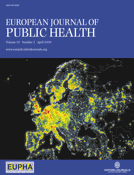 Novel strategies to mine alcoholism-related haplotypes and genes by combining existing knowledge framework
Novel strategies to mine alcoholism-related haplotypes and genes by combining existing knowledge framework Science in China Series C: Life Sciences Volume 52, Number 2 / February, 2009 pp. 163-172
High-throughout single nucleotide polymorphism detection technology and the existing knowledge provide strong support for mining the disease-related haplotypes and genes.
In this study, first, we apply four kinds of haplotype identification methods (Confidence Intervals, Four Gamete Tests, Solid Spine of LD and fusing method of haplotype block) into high-throughout SNP genotype data to identify blocks, then use cluster analysis to verify the effectiveness of the four methods, and select the alcoholism-related SNP haplotypes through risk analysis.
Second, we establish a mapping from haplotypes to alcoholism-related genes. Third, we inquire NCBI SNP and gene databases to locate the blocks and identify the candidate genes. In the end, we make gene function annotation by KEGG, Biocarta, and GO database. We find 159 haplotype blocks, which relate to the alcoholism most possibly on chromosome 1∼22, including 227 haplotypes, of which 102 SNP haplotypes may increase the risk of alcoholism. We get 121 alcoholism-related genes and verify their reliability by the functional annotation of biology.
In a word, we not only can handle the SNP data easily, but also can locate the disease-related genes precisely by combining our novel strategies of mining alcoholism-related haplotypes and genes with existing knowledge framework.
Read Full AbstractRequest Reprint E-Mail: lixia6@yahoo.com___________________________________________________
 Associations and Interactions Between SNPs in the Alcohol Metabolizing Genes and Alcoholism Phenotypes in European Americans
Associations and Interactions Between SNPs in the Alcohol Metabolizing Genes and Alcoholism Phenotypes in European Americans

































